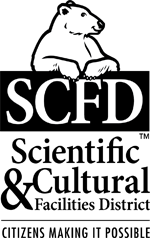As a watercolorist and painting instructor, I am always interested in learning about the properties of different pigments and eager to share that information with my students. As I gain experience using different colors made by different manufacturers, I find that I choose hues not just for the color they impart, but also for other aspects, such as their granulating properties, or their ability to be lifted out.

As an extension of learning about how different paints react with water on paper, I also find myself looking at the chemical makeup of the pigments. For instance, I noticed that Cheap Joe’s Alizarin Crimson, Graham’s Quin Rose and Winsor Newton’s Permanent Rose all specify their pigment as PV19. Yet Winsor Newton’s Alizarin Crimson differs from Cheap Joe’s with its pigment being PR83. In dabbing a sample swatch, I found the hues to be quite similar, yet somewhat different in temperature and in saturation. Curious, I called Cheap Joe’s — they’ve always been helpful with past questions. The pigment PV19 is heated to different degrees in order to achieve the various colors, the customer service rep explained. That makes sense — it’s the same pigment, just processed differently.

I’ve also been reading “Color, a natural history of the palette” by Victoria Finlay. Interesting but a bit lengthy at times, it takes the reader on a journey seeking the origin of many pigments, such as Mummy Brown, which was actually derived from ground-up mummies — obviously no longer a politically correct thing to do, or the story of Indian Yellow, which purportedly came from one specific area in India where cows’ urine was collected after they were force-fed mango leaves. In traveling to the city in question, the author found no one knew of her claims regarding Indian Yellow, but stepping into some squishy cow dung and looking down at her shoe, she discovered its actual source. No wonder Winsor Newton complained of this pigment’s foul odor! The history of cochineal was another interesting chapter in this book. Tiny insects found on cacti in South America are collected, dried and ground to make the pigment for carmine. This additive was even approved as a food-safe dye.

Articles in the magazine International Artist, written by color expert Michael Wilcox have also been very illuminating. He details origins, history of use and specific properties of paints, such as lightfastness and usage.
There is so much to learn about color and paints, not only different paints’ sources, history and physical properties, but also other manifestations associated with different colors — such as my previous blog entry about Haint Blue being used to repel spirits, colors being employed to aid appetite, calm nerves or other physiological effects. Color plays its part in synesthesia, where one type of stimulation evokes the sensation of another. There is no end to the things one can learn about color, and produce a pretty painting while doing so!










